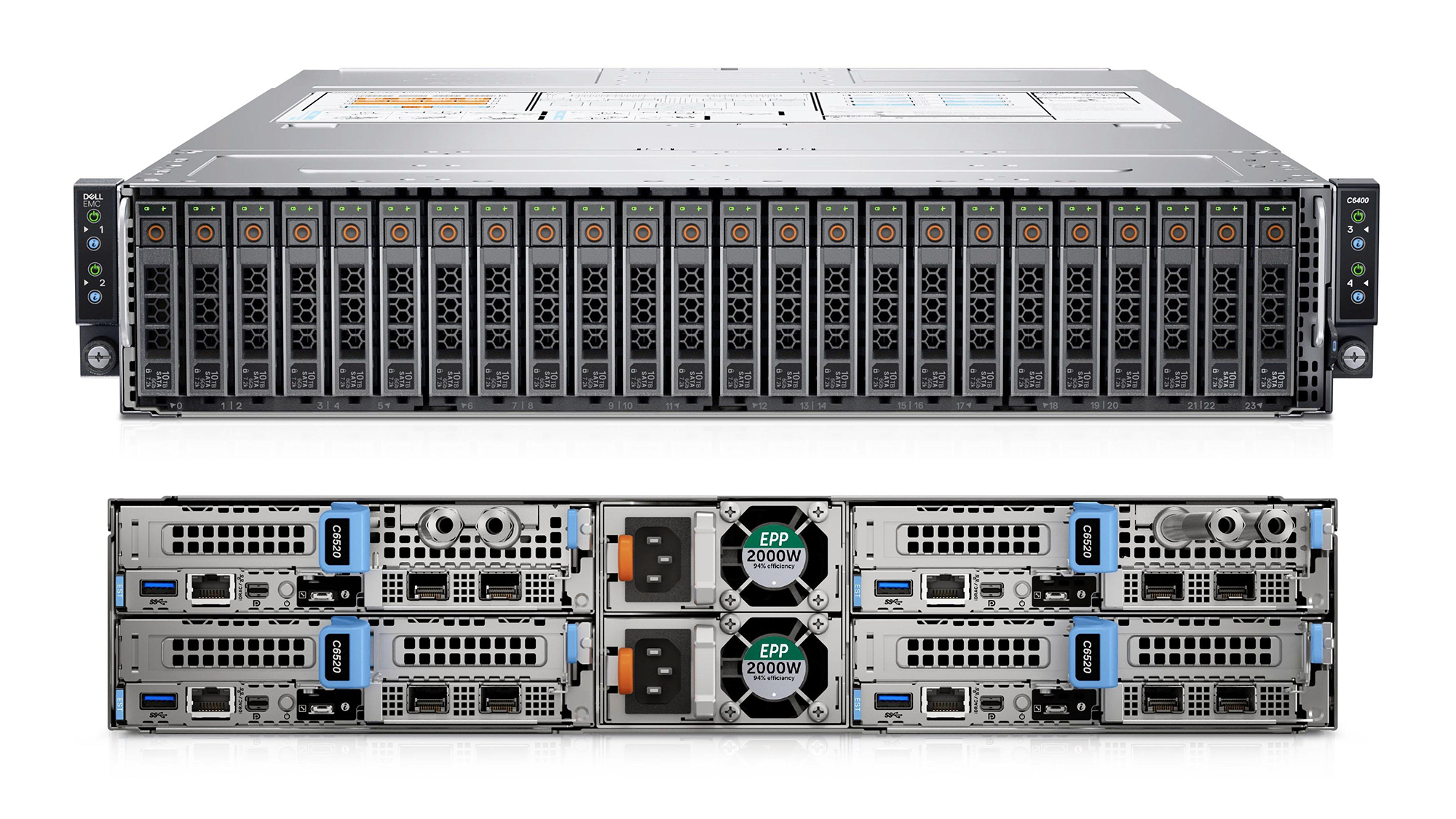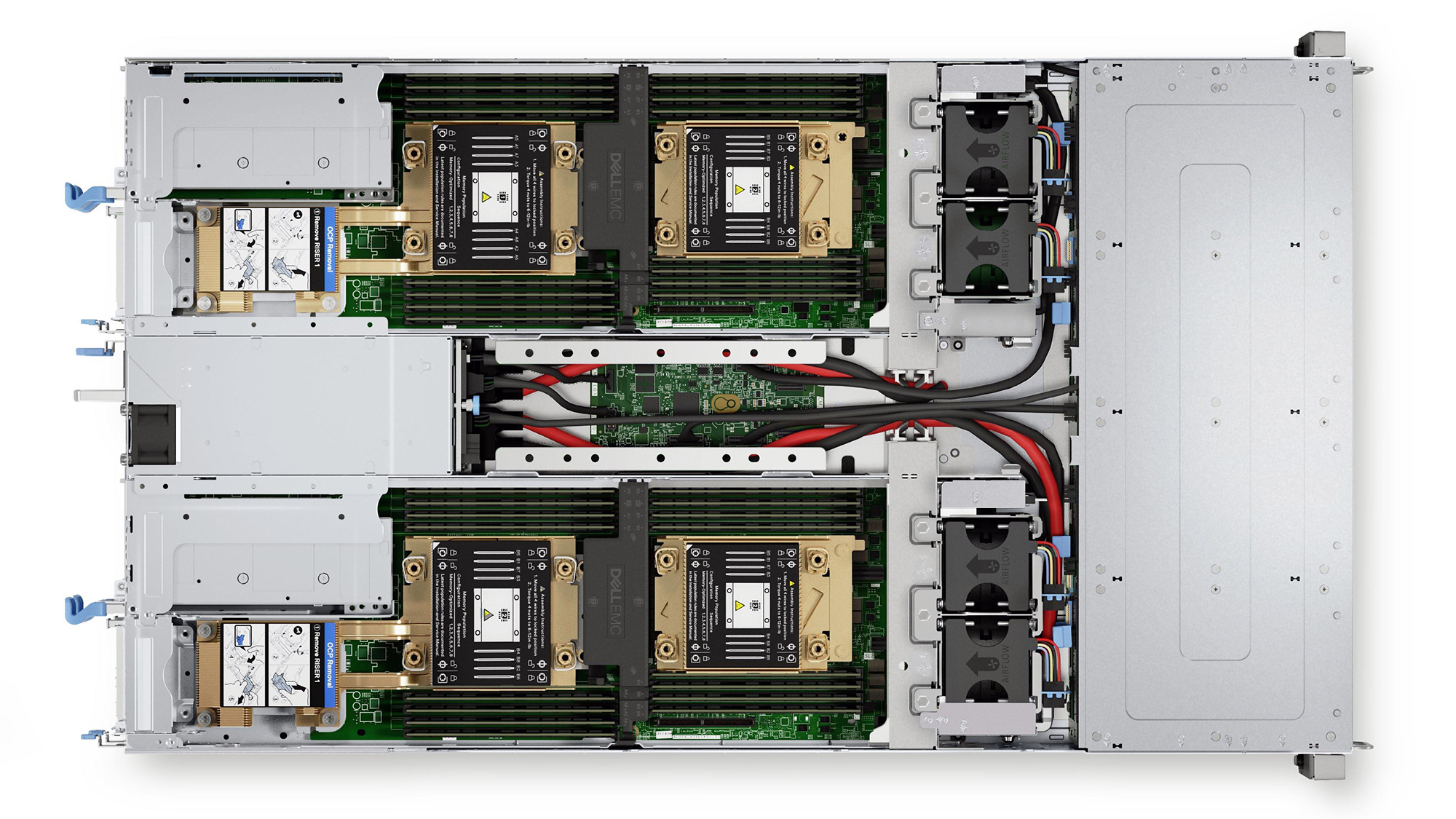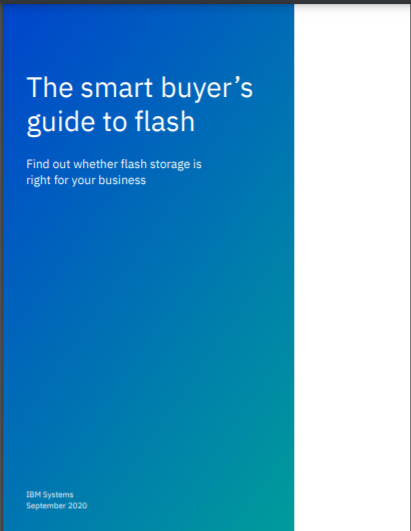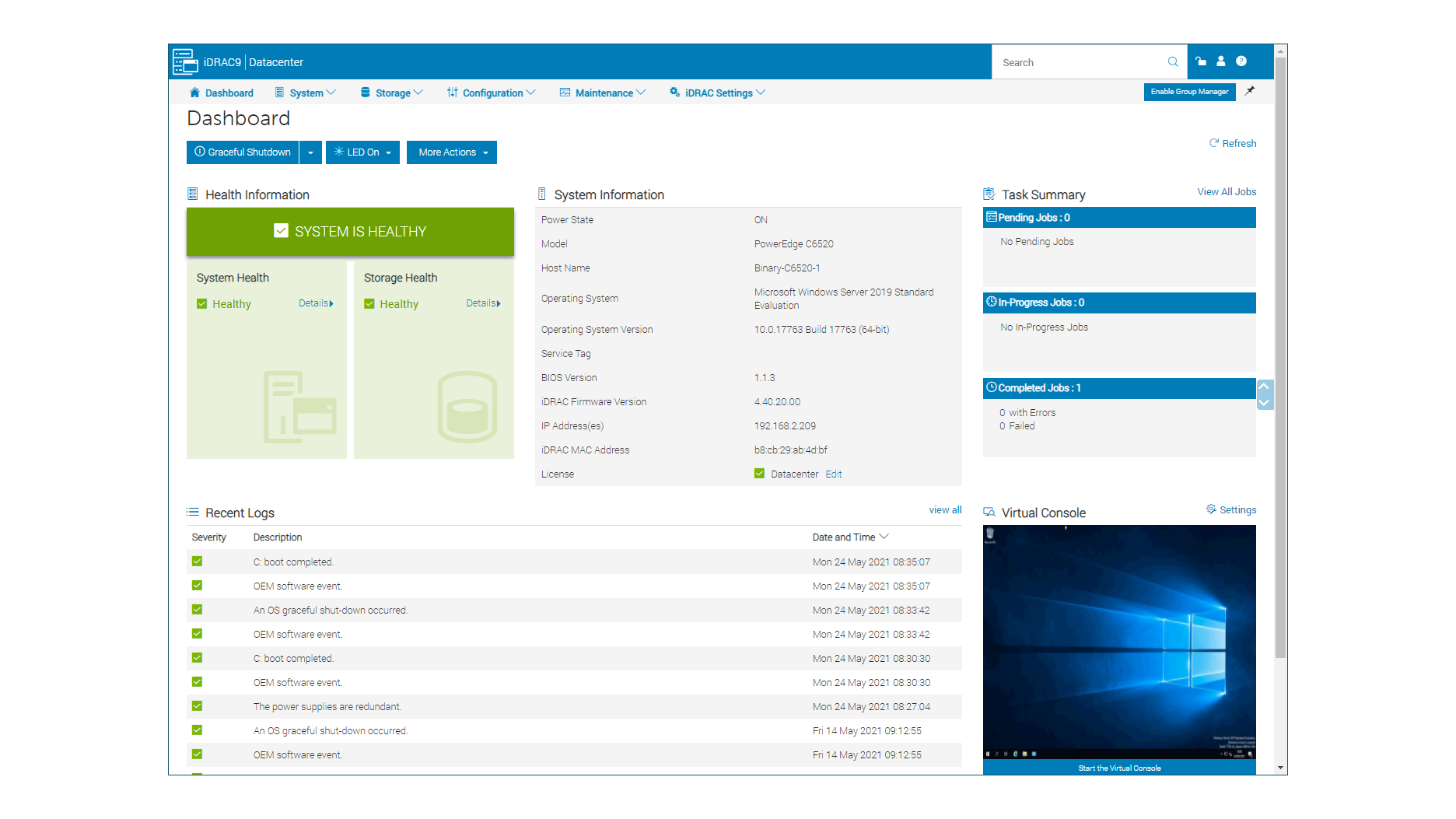Dell EMC PowerEdge C6520 review: Super dense Gen3 Xeon Scalable
Dell EMC’s multi-node server packs and racks Intel’s latest CPUs


-
+
High Gen3 Xeon Scalable core count
-
+
Expandable nodes
-
+
Good storage choices
-
+
Classy remote server management
-
-
Some thermal restrictions

Multi-node servers are perfect for data centers demanding ever greater compute densities without an increase in real estate and Dell EMC's PowerEdge C-Series of rack servers have traditionally offered an appealing solution. Built around its trusty C6400 chassis, they support up to four independent compute nodes and the PowerEdge C6520 brings Intel's 3rd Generation 'Ice Lake' Xeon Scalable CPUs to the table.
The C6520 nodes are the dual-socket (2P) variety and support every Xeon Scalable model right up to Intel's mighty 40-core 2.3GHz Platinum 8380. Processing density isn't as high as Dell EMC's AMD-based PowerEdge C6525 but Intel shops will appreciate being able to cram up to 320 physical and 640 logical cores into only 2U of rack space.
The C6520 targets a wide range of enterprise workloads such as HPC, massive parallel computing, financial modelling, high-frequency trading and, of course, server consolidation. For those that require a more scalable performance, reduced operating costs and lower cooling requirements, the C6520 can be deployed as a rack dense solution for 1P workloads.
Dell EMC PowerEdge C6520 review: C6400 chassis
The C6400 chassis has seen an extensive tour of duty: it's the same as employed by the PowerEdge C6525 and also the 14th Gen PowerEdge C6420 which was first launched back in 2017. In reality, there isn't much that needs changing as its primary functions are to provide power to the nodes along with storage backplane services.
The chassis uses a central mid-plane management board to distribute power to the nodes and Dell EMC offers a wide range of hot-plug PSUs. The review server was supplied with dual 2,000W PSUs, but 1,600W, 2,400W and 2,600W versions are also available.

Our system had 24 SFF drive bays (a 12-bay LFF model is also available) and each node gets an equal share of drives which, in the standard configuration, can be all SAS3/SATA, with the first two bays of each group also supporting NVMe SSDs. Note, however, that this is a legacy mixed-mode backplane and only offers PCI-e 3 speeds, whereas the new all-NVMe backplane delivers PCI-e 4 performance.
The air-cooled version of this chassis uses four cold–swap fans but has a number of thermal restrictions, as most Xeon Scalable CPUs with TDPs of 235W and above are not supported in DP configurations. However, Dell EMC offers a DLC (direct liquid cooling) option which is up to four times more efficient than air-cooling and removes all thermal restrictions.
Dell EMC PowerEdge C6520 review: Nodes
Our review system was supplied with a single node equipped with dual 2.1GHz 36-core Xeon Scalable Platinum 8352V CPUs which are optimised for virtualization duties. Their 195W TDP puts them on the right side of any thermal restrictions and CPU 1 was also fitted with the extended heatsink kit which provides an extra 5℃ of leeway for continuous operating temperatures.
The CPU sockets are flanked on each side by four DIMM slots and ours were all populated by 16GB 3,200MHz DDR4 RDIMM modules. Memory capacity can be boosted to 1TB using RDIMMs and 2TB with LR-DIMMs.
RELATED RESOURCE

The smart buyer’s guide to flash
Find out whether flash storage is right for your business
Expansion potential is good, as the nodes have two PCI-e Gen 4 slots, although the extended heatsink loses one of them. No matter; underneath this is an OCP 3.0 mezzanine card edge slot which accepts open-standard OCP 3.0 network cards from other partners, as well as Dell EMC's own Gigabit, 10GbE, 25GbE and 100GbE adapters.
The node's embedded S150 controller supports SATA devices and offers software-managed stripes, mirrors and RAID5 arrays but SAS3 support will require an additional PERC controller to be fitted. The C6520 supports a good range, with the top dog PERC H745 RAID card supporting SATA/SAS devices and offering plenty of RAID array options.

For workloads that don't require much storage, you can specify a C6400 chassis without a backplane, which will improve your thermal outlook as airflow is less restricted. The nodes have a dedicated slot at the rear which supports a BOSS-S1 (boot optimized storage subsystem) dual M.2 SATA adapter, which provides mirrored storage for running an OS.
Dell EMC PowerEdge C6520 review: Remote management
The C6520 nodes come with a single Gigabit LOM (LAN on motherboard) card, which slots in underneath the right expansion riser and can be shared with the embedded iDRAC9 controller. Remote management features are tops, and the iDRAC9 web console provides a wealth of information about hardware health plus operational status - and unlike Dell EMC's AMD-powered servers, you also get the System page performance tab, which provides graphs of CPU, memory and I/O utilization.
Multiple servers and nodes can be centrally managed using Dell EMC's OpenManage Enterprise (OME). We run the latest v3.4 in the lab as a Hyper-V VM and used its discovery service to add our C6520 node, after which we could view its vital signs, remotely control it and employ OME's firmware services to ensure it was running the latest version.
For more control, the OME Power Manager plug-in is a worthy addition as it can be used to pull up historical views of power consumption and thermal values going back up to a year. Even better, it can enforce per-rack power cap and thermal event-based policies while its EPR (emergency power reduction) feature can apply a low power mode to all group members to control consumption and if necessary, gracefully shut them all down.
Dell EMC PowerEdge C6520 review: Verdict
The PowerEdge C6520 may not be able to match the monstrous core density offered by the AMD-based PowerEdge C6525 but it still packs an impressive amount of Gen3 Xeon Scalable power into a rack-friendly 2U chassis. Available in air and liquid cooled configurations, the nodes are well designed with good expansion potential, while remote management features are simply the best - a great choice for high performance or hyperscale workloads and Intel houses with big server consolidation plans.
Dell EMC PowerEdge C6520 specifications (as reviewed)
| Chassis | Dell C6400 2U rack enclosure |
| Node slots | Up to four C6520 nodes |
| Power | 2 x 2,000W hot-plug PSUs |
| Storage | 24 x SFF SAS/SATA/NVMe backplane |
| Nodes | 1 x C6520 node included with the following specification |
| CPU | 2 x 2.1GHz 36-core Intel Xeon Scalable Platinum 8352V |
| Memory | 256GB 3,200MHz RDIMM DDR4 ECC (max 2TB with LRDIMM) |
| Storage | 2 x 960GB Dell NVMe SSDs |
| RAID | Embedded S150 SATA |
| Network | Gigabit LOM card |
| Other | 2 x 10GbE SFP+ OCP 3.0 mezzanine card |
| Expansion | 2 x PCI-E 4.0 X16 risers, dedicated BOSS-S1 slot |
| Management | Dell iDRAC9 Enterprise |
| Warranty | 1Yr ProSupport On-Site NBD |
Get the ITPro daily newsletter
Sign up today and you will receive a free copy of our Future Focus 2025 report - the leading guidance on AI, cybersecurity and other IT challenges as per 700+ senior executives
Dave is an IT consultant and freelance journalist specialising in hands-on reviews of computer networking products covering all market sectors from small businesses to enterprises. Founder of Binary Testing Ltd – the UK’s premier independent network testing laboratory - Dave has over 45 years of experience in the IT industry.
Dave has produced many thousands of in-depth business networking product reviews from his lab which have been reproduced globally. Writing for ITPro and its sister title, PC Pro, he covers all areas of business IT infrastructure, including servers, storage, network security, data protection, cloud, infrastructure and services.
-
 ‘Phishing kits are a force multiplier': Cheap cyber crime kits can be bought on the dark web for less than $25 – and experts warn it’s lowering the barrier of entry for amateur hackers
‘Phishing kits are a force multiplier': Cheap cyber crime kits can be bought on the dark web for less than $25 – and experts warn it’s lowering the barrier of entry for amateur hackersNews Research from NordVPN shows phishing kits are now widely available on the dark web and via messaging apps like Telegram, and are often selling for less than $25.
By Emma Woollacott Published
-
 Redis unveils new tools for developers working on AI applications
Redis unveils new tools for developers working on AI applicationsNews Redis has announced new tools aimed at making it easier for AI developers to build applications and optimize large language model (LLM) outputs.
By Ross Kelly Published
-
 Google layoffs continue with "hundreds" cut from Chrome, Android, and Pixel teams
Google layoffs continue with "hundreds" cut from Chrome, Android, and Pixel teamsNews The tech giant's efficiency drive enters a third year with devices teams the latest target
By Bobby Hellard Published